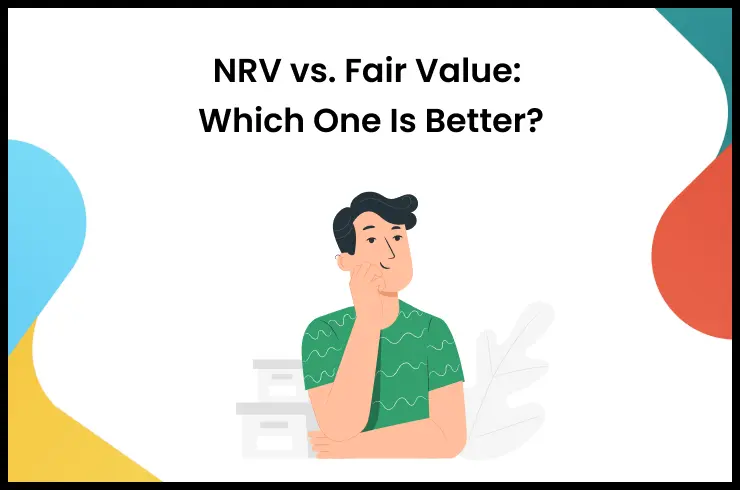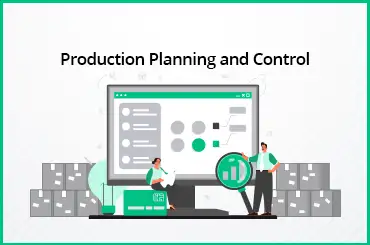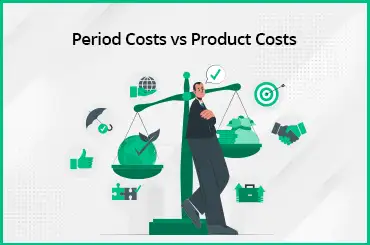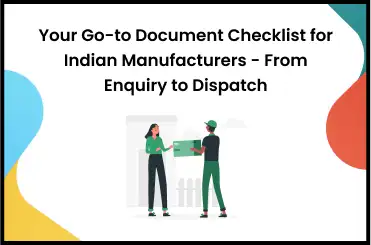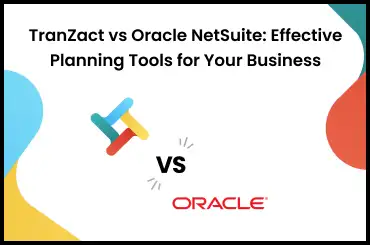Manufacturing businesses often face issues of mismanagement of raw materials, high costs, and manual errors. Small to medium-scale manufacturers are at the highest risk of these issues. Procurement planning can help you avoid these issues and lead you to successful project management and business growth.
A good procurement planning strategy can lead to better demand-management, reduce financial risks, and prepare businesses for successful project outcomes. In this blog post, we will understand the basics of procurement planning and how it helps in selecting the right vendors and suppliers for the business.
What Is Procurement Planning?
Procurement planning is the process of creating a procurement strategy for materials for a business. It involves finding out what the business needs, who can supply the products, and when to fulfill the orders. It uses data and analytics to monitor and improve the procurement process. It includes regularly measuring and reviewing key performance indicators (KPIs) to understand the business.
Procurement planning is an important tool for businesses to cut purchasing expenses while maintaining high standards for their goods' quality and quantity. For this, different departments collaborate with the procurement team to make decisions. It involves tasks like requesting proposals, researching vendors, and the approval process. This helps businesses cut down on stock ordering and labor expenses without compromising on the quality of goods.
Procurement Planning: Its Importance
Without procurement planning businesses get stuck with higher costs, overstocking and understocking. Now that you have understood the procurement planning meaning, let's understand the importance of procurement management:
- Purchasing Decisions: It guides manufacturers on what, when, and where to buy important items. This prevents overstocking and understocking.
- Realistic Expectations: It helps make commitments that can be fulfilled. This is important when parties want a quick delivery timeline that might not match with procurement.
- Strategic Approach: Strategic planning allows the creation of a well-thought-out procurement plan for each product. It involves sales, inventory analysis and market research.
- Collaborative Platform: Procurement planning software provides a platform for all parties to discuss procurement. It has a chat interface, which can be used by the in-house team as well as suppliers.
- Time Management: The main purpose of the procurement management plan is to set the timeline needed to complete procurement.
- Performance Monitoring: Strategic procurement planning helps decide whether to combine or divide procurement needs into different contract packages for better workflow.
Procurement Plan Writing Guide
Procurement planning is an important process and requires all the details and stages to be written down in a document. That document is called a procurement plan. Let's understand the steps:
1. Process Overview:
The first part of the plan describes the key resources required for purchasing products. It also includes the strategy plan for managing this process. Furthermore, it mentions the details of the products and explains why certain suppliers are preferred.
2. Role Clarification:
This part lists the key individuals involved in the project. This includes roles like Project Managers, Technical Managers, Contract Managers and C-Level Executives. The purpose of procurement plan is to monitor vendors at every stage once they’ve committed to the contract.
3. Timeline and Change:
It mentions procurement planning process steps for the project. It defines when the products or services are required. It also mentions the organization’s strategies for managing changes to the procurement process and its documentation.
4. Legal Compliance:
Procurement strategy plan also contains all legal requirements for the project to make sure that the company and vendor stick to the laws. It also includes details of the payment methods throughout the procurement process.
5. Risk Management:
An important part of the document is the project’s risk profile. This includes risk capacity, chances of risks occurring, possible impact of risks, types of contracts involved, and processes for reviewing and approving requirements.
6. Project Constraints:
Explain the restrictions and limitations affecting the project team and vendor. These may involve time limits, legal regulations, financial limitations, geographic limitations, and security requirements.
7. Performance Monitoring:
The last part is an analysis of the procured item. Predefine the key performance indicators (KPIs) to measure the quality of the provided products or services. It also includes time limits, financial limits etc.
Procurement Planning Benefits
Procurement planning plays an important role in the successful purchasing of a manufacturing business. Here are some of the most important benefits:
- It improves the transparency and accuracy of the procurement process. It helps businesses break complex requirements into smaller parts.
- It allows companies to quickly identify any extra material requirements. It helps make sure that the business can get the necessary resources to continue its operations.
- It helps businesses compare actual performance against planned project activities and timelines to find areas for improvement.
- It offers a platform for all stakeholders to discuss the requirements. This makes sure that all parties are on the same page.
- It helps in finding potential risks and making strategies to deal with them. This prevents costly delays and disruptions.
Procurement Software Examples
Procurement software is a digital tool that simplifies purchasing and inventory management tasks. It allows businesses to generate purchase orders, manage online orders, handle payments, and compare invoices with received materials. Here are the four main procurement plan example softwares:
- Procure to Pay (P2P) Software: This software covers the entire procurement process from requisition to payment.
- Purchasing Software: This software focuses on the purchasing part of procurement. It automates the process of buying goods and services.
- Spend Analysis Software: This software provides businesses with insights into their spending patterns.
- Request for Proposal (RFP) Software: This software simplifies the process of creating, managing, and evaluating RFPs.
Transform Procurement Planning With TranZact
Procurement planning is very important for a successful business. It simplifies the process of acquiring goods and makes sure that your procurement is working at its best in your business. However, the details of procurement planning can sometimes be too much for Indian SME manufacturers. This is where TranZact comes into play.
TranZact is software with a simple interface and advanced features that make it procurement easy for businesses. This tool is specifically made to help Indian SME manufacturers to help with their operational tasks. It provides the exact count of materials to be purchased for optimum inventory and timely order fulfillment.
TranZact is a complete software for SMEs that helps with sales,inventory,planning, purchase and production. Take TranZact's free demo to understand how it can help your business
FAQs on Procurement Planning
1. What is raw material procurement planning?
Raw material procurement planning is the systematic process of forecasting, organizing, and managing the purchase of primary raw materials needed for production.
2. What are the factors affecting procurement planning?
The factors that affect procurement planning are demand forecasting, supplier relationship, market conditions, budget management, lead time, etc.
3. What is import procurement planning?
Import procurement planning is the strategic process of scheduling and supervising the purchase of goods or materials from international suppliers or other sources.
4. What is procurement planning?
Procurement planning is the process of carefully deciding how an organization will get the goods and services it needs to function properly.
5. Why is procurement planning important?
Procurement planning is important because it:
- Helps save money
- Manage supply chain risks
- Makes sure you have the right materials
6. What are the benefits of the procurement plan process?
The main advantages of procurement planning are that it improves purchasing, reduces costs, strengthens supply chain performance, and helps organizations have what they need to work smoothly.
7. What are the six main steps in the procurement management process?
The key steps in procurement planning include:
- Understanding needs
- Identifying suppliers
- Setting timelines
- Managing risks
- Creating budgets
- Assuring legal standards are met.
8. What are the 7 steps of procurement process?
The 7 steps of the procurement process are:
- Identify Needs and Objectives
- Conduct Market Research
- Develop a Procurement Strategy
- Supplier Selection and Qualification
- Contract Negotiation and Award
- Order Fulfillment and Delivery
- Evaluate Performance
9. What are the 5 main processes of project procurement management?
The 5 main processes of project procurement management are:
- Finding of needs
- Looking for Suppliers
- Procurement planning
- Sending orders
- Evaluation and selection
10. What is the meaning of purchase plan?
A purchase plan is a strategy of steps necessary to procure goods or services. The importance of purchase planning is in its ability to prevent costly mistakes, save time and resources, and improve overall efficiency.
11. What are the 9 steps in the purchasing planning process?
The 9 steps in the purchasing planning process are:
- Define the Need
- Create a Purchase Requisition
- Review of Purchase Order (PO)
- Request for Proposal (RFP)
- Finalize Contracts
- Review Vendor Performance
- Three-way matching
- Approve the Invoice and Pay
- Record Keeping
12. What is the strategic planning process in procurement?
The strategic planning process in procurement involves finding the main expenses within the business and looking for ways of adding value through procurement processes. This can happen by analyzing the company’s purchasing needs.
13. What is procurement planning definition?
To define procurement planning, it is a process that outlines how a company will acquire the necessary materials to produce its goods and services.
14. What is the importance of annual procurement plan?
An Annual Procurement Plan (APP) is an important document for any organization because it helps to make sure that all the necessary items and services are obtained in a timely and cost-effective manner.
15. What is the best definition of procurement?
Procurement is the strategic process of acquiring goods, services, or works from external sources. This involves selection, negotiation, and contract management to meet business needs.
16. Why is procurement planning important?
Procurement planning is impotant for Indian SME manufacturing businesses to make sure of timely and cost-effective sourcing of materials, minimizing production delays and optimizing supply chain efficiency.
17. What are the advantages of procurement planning?
Procurement planning helps with timely and cost-effective resource acquisition. It reduces risks of delays and cost overruns. It improves supplier relationships and optimizes inventory management for smooth operations.







